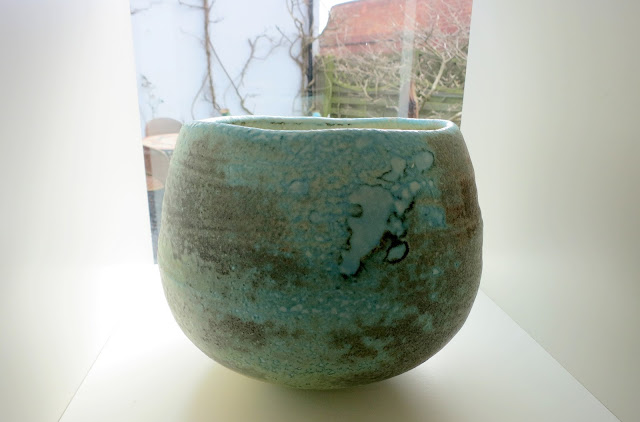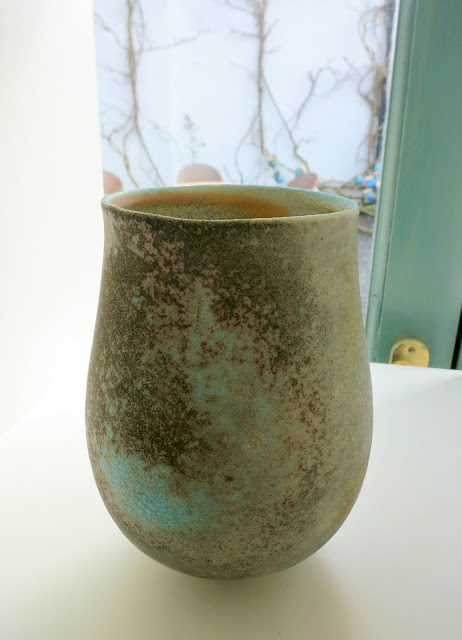'The colours in my paintings are intense, but in my work there's never only one reason for why something is the way it is. I suppose I deliberately court the intensity of colour to mirror the intensity of feeling that comes with memory'. Hughie O'Donoghue.
Seeing this exhibition was the reason for our recent trip to London. Ever since I first saw one of O'Donoghue's paintings, I have been hooked. Magnificent, intense, semi-abstract, with old master blacks and fiery oranges, these paintings took my breath away. This exhibition is a tribute to Van Gogh, focusing on the paintings Van Gogh made during the last two years of his life in Arles and St Remy in the south of France. The richly worked new paintings revisit and reimagine the imagery observed and invented by Van Gogh as he struggled to make a lucid vision manifest while his health deteriorated in demoralising circumstances. O'Donoghue has chosen to situate these paintings in his own immediate environment, the enclosed fields beside his studio. The subject therefore is brought into O'Donoghue's own territory and field of vision.
And: 'A touchstone, a real painter, with a sense of the material: the mud that is paint. What's so important is that he invented new genres. The painting of his chair, for example, is a portrait. No one had done anything like that before. These aren't conceptual paintings. They deal with memory, the resonance of ordinary things. Van Gogh imaginatively reconstructed the world and defined what it is to be a modern painter'.
Lavender Field, 2017, (oil on prepared tarpaulin)
Crows Above a Grainfield I, Aloft, 2017-18, (oil on jute canvas)
Revolution Road, 2917-18, (oil, acrylic, liquid metal and photographic trace on prepared tarpaulin)
Crows Above a Grainfield III, Turbulent Indigo 2017-18, (oil on jute canvas)
When the Last Fires Have Burned Out, 2017-18, (oil on linen canvas)
Hammering the Earth, 2017-18, (oil, acrylic, liquid and leaf metal and photographic trace on prepared tarpaulin)
The model for this painting is Vinnie, O'Donoghue's son. He wears his father's suit and is carrying his great-grandfather's cardboard case and his grandfather's cane. There are layers of meaning here: the solitary quest of the artist, the image of migration from rural Ireland.
The Full Heat of the Sun, 2017-18, (oil on prepared tarpaulin)
The Painter Van Gogh, 2017-18
The Painter Van Gogh, 2017-18
The Painter Van Gogh, 2017-18


















































